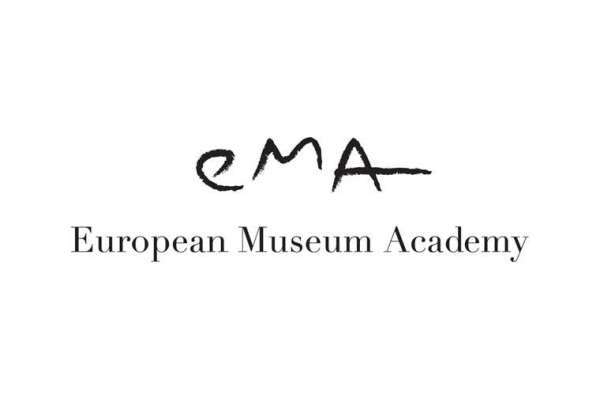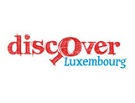 Credit: EMA
Credit: EMA
On Saturday 10 September 2022, the winners of three prizes awarded by the European Museum Academy (EMA) were announced: the Luigi Micheletti Award 2022, the DASA Award 2022 and the Art Museum Award 2022, with a special mention for the MUDAM (Musée d'Art Moderne Grand-Duc Jean, Luxembourg) for its impressive commitment of social responsibility and the capacities for innovation and empathy shown by the museum towards the public in several of its recent activities.
Following the EMA colloquium held in Esch-sur-Alzette and at the University of Esch-Belval from 8 to 10 September 2022, the award ceremony took place at MUDAM.
Andreja Rihter, President of the EMA, said: "It has been a great joy for us to be able to physically visit the museums competing this year for the Micheletti and DASA Awards, after two years in which this was impossible for us, due to the COVID-19 coronavirus pandemic. It is one of the cornerstones of our awards programme to visit each of the museums that participate in our competition and we appreciate it, especially for smaller museums, that you take part in face-to-face exchanges with the members of the jury who travel to your country. Although it was important, to maintain the continuity of the awards, to exchange online for the 2020/21 season, there is actually nothing like being able to dialogue face-to-face."
The Luigi Micheletti Award is given to the Museum of Woodcarving in Konjic, Bosnia and Herzegovina, which represents the history of the woodcarving tradition in this Bosnian town. This craft was inscribed in 2017 in the Intangible Cultural Heritage of UNESCO. This museum is also a model for the preservation of traditional crafts, through the bridges it builds between craftsmanship and modernist design. Gano Nikšić, grandfather of the current director, discovered a primitive technique of hand carving, originating from a small neighboring village of Konjic. He perfected this technique and his collaboration with furniture makers from Sarajevo led to the recognition of this craftsmanship throughout the world. Gano passed on his talents to his four sons and the family has designed and manufactured hand-carved furniture of this quality, which is the family heirloom, for more than four generations. The collection features historical documents and archival material, including original photographs of woodcarvers and the luxurious interiors they decorated, as well as illustrations from major international exhibitions from the turn of the 20th century. Local community engagement has grown through working with local cultural institutions to organize events, workshops and public demonstrations of woodworking techniques.
The jury's opinion: This is a good example of preserving and strengthening an intangible heritage, an entirely private initiative that could motivate cultural investment in a part of Europe whose needs for local development based on culture are very strong. The excellent design of this exhibition comes into its own, thanks to an impressive scenography. The museum is an excellent communicator of a world's intangible heritage leading to a living tradition in the 21st century – a model for other world heritage places.
A special mention goes to the Deutsches Museum Nürnberg, Zukunftsmuseum, Germany, with the jury praising the new cooperation between science, industry and museology, its inclusion of all its visitors and the fact that the museum dares to also deal with fear and failure.
The 2022 DASA award goes to the HC Andersens Hus (Hans Christian Andersen House) of Odense, Denmark. The circular geometry of the building signals the absence of spatial hierarchy and visitors go from one place to another by taking inclined walkways. This conception of space runs throughout the building, echoing Andersen's natural literary style. The ambition of the museum is thus to create an "Andersenian universe", where reality is suspended and where the visitor becomes the character of a story - an exploration that is aimed at both children and adults. Exhibits on Andersen's life reveal how the writer's humorous yet sometimes ambiguous tales rarely have happy endings. The didactic and edifying approach reinforces the power given to all children to find their own voice and develop their own fictions themselves. The visits and programs are designed to intelligently stimulate different creative energies, alert all the senses and refer to social reality and its issues, such as the environment or gender issues. Paradoxically, this universe of an otherworldly fantasy offers a mirror to our own society and shows it its possibilities. “Everyone can play a role” is the watchword here. Interactivity and participation, with democratic technologies: these are the top priorities.
The opinion of the jury: The HC Andersens Hus pays homage to the human imagination – a force of inestimable importance for our society. With its impressive architecture and masterful scenography, its universal charm will be appreciated by all lovers of Andersen's work. The varied and multifaceted educational programmes encourage young people to discover the power of their creativity, to translate it into expressive language, to mature and become confident human beings. A model that adults can also learn from.
A special mention goes to the Muzeum Emigracji (Museum of Emigration), Gdynia, Poland. From a historical perspective, it's a masterful example of a quiet turn to a fully connected version, without losing any of the historical perspective. A model for the museums of the future.
The Art Museum Award is given to the Lewis Glucksman Gallery in Cork, Ireland, named after one of its founders and donors, American financier and philanthope Lewis Glucksman, a museum which opened in 2004. The following year, the city of Cork was European Capital of Culture. Located in the grounds of University College Cork, it represents an important link for the university with a wide audience, as a place of creative connections between people and disciplines. The collection is based on modern and contemporary Irish art. Sustainability and inclusion are central to the museum's policy and operations and are also reflected in the structure of the building for which the architects, O'Donnell + Tuomey won an award. The Lewis Glucksman Gallery team has developed digital programs and carries out large-scale projects on and off site: in gallery spaces and public spaces. These projects enabled participants from marginalised or rural communities (travelers, refugees, LGBTQ+, homeless families) to find a way to express and visualize their own thoughts and opinions on important societal issues, through a creative organism.
The opinion of the jury: The excellence of the practices of conservation and preservation of the collections, commitment towards the public constitute the core values of the Lewis Glucksman Gallery. With their projects, the teams have achieved impressive results, likely to inspire other museums around the world. The museum inspires artists and communities to explore and visualise their own thoughts and opinions regarding the most important societal issues. The Lewis Glucksman Gallery considers its primary role to be civic: that of a creative organism at the heart of different communities. The Art Museum Award it has been awarded is therefore well deserved.
List of Finalists for the European Museum Academy Awards 2022
Luigi Micheletti and DASA Awards
- Deutsches Museum Nuremberg, Zukunftsmuseum, Germany
- House Hans Christian Andersen, Odense, Denmark
- Museum of Emigration, Gdynia, Poland
- Vest-Agder Museum, Kristiansand, Norway
- Wood sculpture museum, Konjic, Bosnia and Herzegovina
Art Museum Award
- Lewis Glucksman Gallery, Cork, Ireland
- MUDAM – Museum of Modern Art Grand-Duc Jean, Luxembourg, Grand Duchy of Luxembourg
- Villa Vauban – Museum of Art of the City of Luxembourg, Luxembourg, Grand Duchy of Luxembourg








